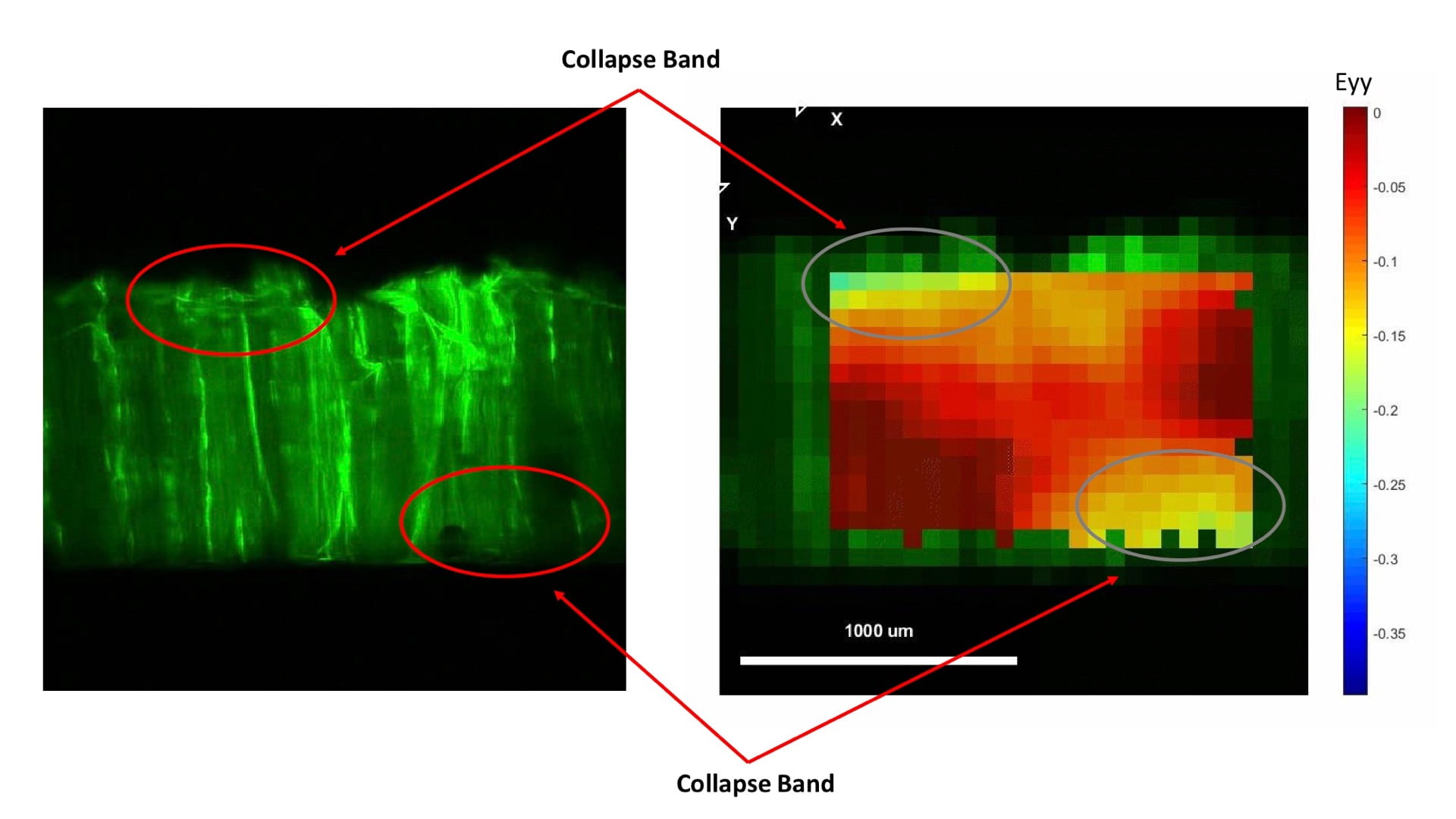Porous polymer scaffolds are commonly used to template cell growth for therapeutic applications in the repair and regeneration of structural tissues such as bone, cartilage, tendon, and ligament. Regardless of the specific application, prior to generation or ingrowth of new tissue, the mechanical function of such implants is dominated by the scaffold. We are interested in the use of such scaffolds for cartilage tissue engineering, in which these materials may experience contact pressures greater than 10 MPa in daily use in vivo. Such loading leaves implants vulnerable to structural instabilities that both compromise their mechanical function and may damage cells living inside the pores of the scaffold. Prevention of these structural instabilities, through optimizing scaffold design, is crucial for improving constructs’ global function and compressive properties leading to a successful cartilage implantation. Previous work has shown a relationship between global biochemical composition and aggregate mechanical properties, but the connection to local mechanical phenomena is not known. From this study, we aim to investigate (1) the local buckling phenomena and (2) ways to prevent micro-scale buckling instabilities induced during compression.
Figure 1: DIC analysis of Honeycomb Compression
Figure 2: High Localized Strain Around Collapsed Region

